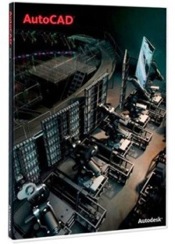AutoCAD Level 3: Creating and Presenting 3D Models
Select a date to register.
- Online Training
- $1,495.00
- Wednesday, May 21, 2025 (Guarantee to Run )
- Wednesday, September 3, 2025
- Wednesday, December 10, 2025

Course Description
In this course, you will learn the fundamental concepts and workflows for creating 3D models using AutoCAD. You will learn to create solid primitives, solid or surface models from cross-sectional geometry, or composite models from multiple solid models, and you'll learn to add the necessary features to detail, duplicate, and position 3D models.
You will learn to document a 3D design by creating 2D drawings for production and visualization, and you'll learn to convert 2D objects to 3D objects. You will learn to communicate design ideas using visual styles, lights, model walk-through tools, and renderings.
What You'll Learn
- Fundamental concepts and workflows for creating 3D models using AutoCAD
- Represent a design by creating solid primitives, solid or surface models from cross-sectional geometry, or composite models from multiple solid models
- Complete a solid model design by adding the necessary features to detail, duplicate, and position 3D models
- Convert 2D objects to 3D objects
- Document a 3D design by creating 2D drawings for production and visualization
- Communicate design ideas using visual styles, lights, model walk-through tools, and renderings
Who Should Attend
Professionals who want unparalleled creative freedom, productivity, and precision for producing superb 3D modeling
Prerequisites
- Knowledge of basic computer navigation
- Basic design/drafting procedures and terminology
- AutoCAD Level 1: Essentials class or equivalent experience.
- AutoCAD Level 2: Intermediate class or equivalent experience.
Course Outline
Note: The curricula below comprise activities typically covered in a class at this skill level. The instructor may, at his/her discretion, adjust the lesson plan to meet the needs of the class.
Lesson 1: Introduction
Lesson 2: Advanced Text Objects
- Annotation Scale Overview
- Using Fields
- Controlling the Draw Order
Lesson 3: Working with Tables
- Working with Linked Tables
- Creating Table Styles
Lesson 4: Projects - Advanced Annotation
Lesson 5: Dynamic Blocks
- Working with Dynamic Blocks
- Creating Dynamic Block Definitions
- Dynamic Block Authoring Tools
- Additional Visibility Options
Lesson 6: Attributes
- Inserting Blocks with Attributes
- Editing Attribute Values
- Defining Attributes
- Redefining Blocks with Attributes
- Extracting Attributes
Lesson 7: Projects - Advanced Blocks & Attributes
Lesson 8: Output and Publishing
- Output For Electronic Review
- Autodesk Design Review
- Publishing Drawing Sets
Lesson 9: Other Tools for Collaboration
- eTransmit
- Hyperlinks
Lesson 10: Cloud Collaboration and 2D Automation
- Connecting to the Cloud
- Sharing Drawings in the Cloud
- Attach Navisworks Files
- Attach BIM 360 Glue Models
Lesson 11: Introduction to Sheet Sets
- Overview of Sheet Sets
- Creating Sheet Sets
- Creating Sheets in Sheet Sets
- Adding Views to Sheets
- Importing Layouts to Sheet Sets
Lesson 12: Publishing & Customizing Sheet Sets
- Transmitting and Archiving Sheet Sets
- Publishing Sheet Sets
- Customizing Sheet Sets
- Custom Blocks for Sheet Sets
Lesson 13: Projects - Sheet Sets
Lesson 14: Managing Layers
- Working in the Layer Properties Manager
- Creating Layer Filters
- Setting Layer States
Lesson 15: CAD Standards
- CAD Standards Concepts
- Configuring Standards
- Checking Standards
- Layer Translator
Lesson 16: System Setup
- Options Dialog Box
- System Variables
- Dynamic Input Settings
- Drawing Utilities
- Managing Plotters
- Plot Styles
Lesson 17: Introduction to Customization
- Why Customize?
- Creating a Custom Workspace
Lesson 18: Customizing the User Interface
- Using the Customize User Interface (CUI) Dialog Box
- Customizing the Ribbon
- Customizing the Quick Access Toolbar
- Customizing Menus
- Keyboard Shortcuts
Lesson 19: Macros & Custom Routines
- Custom Commands & Macros
- Running Scripts
- Action Recorder
- Editing Action Macros
- Loading Custom Routines